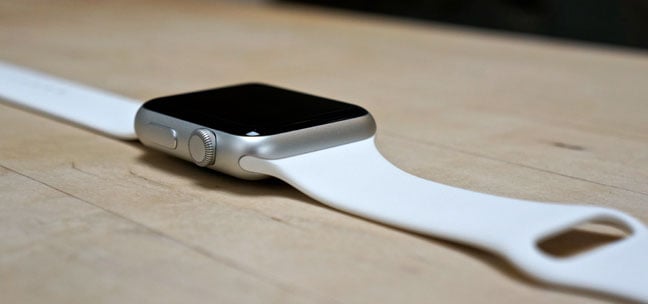 Smartwatch sales have been steadily increasing in recent years, thanks to Apple’s efforts, as well as downward pricing pressure from Chinese firms like Xiaomi. And, according to entrail prodders at analyst haus CCS Insight, those who buy them are fairly content.
Smartwatch sales have been steadily increasing in recent years, thanks to Apple’s efforts, as well as downward pricing pressure from Chinese firms like Xiaomi. And, according to entrail prodders at analyst haus CCS Insight, those who buy them are fairly content.
A survey of 4,473 individuals in the US and UK found that 70 per cent of smartwatch owners use their devices on a daily basis, with 81 per cent saying they’d be “disappointed” if they were unable to obsessively track their activity forgot to wear their device.
The survey shows 57 per cent of those who own them are highly satisfied with their pricey wrist ‘puter, and – this should put an irritatingly smug smile on vendors’ faces – only 7 per cent wouldn’t countenance ever replacing their smartwatch with a fresher model.
They’re very expensive…
The analyst also asked users about their motivations for getting a smartwatch. Samsung and Apple have heavily marketed their devices to fitness enthusiasts, to the point where the Apple Watch commercials could run with the tagline: “It’s not for you, chippy tits.” I mean, it practically does, albeit in a subtle and less-sweary way.
It’s therefore no surprise that more than half of the individuals surveyed by CCS described fitness features – like sports modes and heartrate monitoring – as hugely important in their buying decisions.
Those who said they don’t own a smartwatch said the biggest barrier was price. That’s hardly surprising – although older models of the Apple Watch are reasonably priced, costing about £200, a top-spec model can easily set you back more than £500, depending on configuration and strap style.
The good news is prices are gradually subsiding, largely thanks to China’s budget mobile giants. One example, the Xiaomi Mi Watch, which packs a Snapdragon Wear 3100 and runs Google’s Android Wear OS, is currently on sale in China for about £150, and is expected to hit European shelves later this year.
Another potential area of growth for the sector is child-friendly smartwatches, which enjoy some popularity in the Far East, but are otherwise absent from the Western tech market.
Is this particularly surprising? Not really. Late last year, rival analyst house Gartner predicted that the market for smartwatches would grow by $10bn in the period between 2018 and 2020 – although it attributes some of this growth to the decline of less sophisticated Fitbit-style devices.
Of course, sector growth and customer satisfaction are finnicky beasts, and are dependent on several external factors. Ultimately, the long-term prognosis for smartwatches has more to do with developer and vendor support, as well as the ability for chipset manufacturers to squeeze more performance and battery longevity from the kit.
[“source=theregister”]




